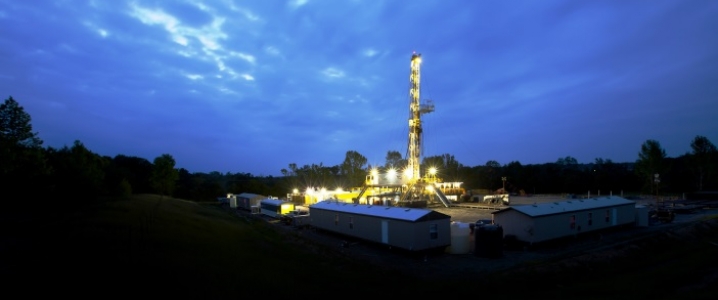The record-setting natural gas production in the United States is benefiting not only consumers. The shale-growth-driven natural gas output is expected to bring benefits to the petrochemical industry as well, as manufacturers will continue to enjoy low-cost feedstock for plants in and close to areas where shale gas and natural gas plant liquids (NGPL) production is abundant, industry officials and analysts say.
U.S. dry natural gas production will set a new record this year, averaging 81.1 Bcf/d, and will continue to rise in 2019, the EIA said in its April Short-Term Energy Outlook.
In the Annual Energy Outlook 2018 (AEO2018), the EIA forecasts that U.S. dry natural gas production will increase through 2050 across a wide variety of alternative assumptions about the future. In the Reference case, which assumes current regulations and laws, U.S. natural gas production is expected to grow by 59 percent between 2017 and 2050, reaching 118 Bcf/d in 2050. The industrial sector, which includes both lease and plant fuel and liquefaction fuel for liquefied natural gas (LNG) exports, currently consumes more natural gas than any other sector in the U.S., and its natural gas consumption is projected to grow faster than in any other sector. Industrial natural gas consumption in the Reference case is expected to increase by 34 percent through 2050.
“Increased U.S. natural gas production is the result of continued development of shale gas and tight oil plays— which account for more than three-quarters of natural gas production by 2050,” the EIA says.
The Marcellus and Utica plays in the East will be the main growth drivers of the U.S. shale gas production, followed by the Eagle Ford and Haynesville plays in the Gulf Coast region. Associated natural gas production from tight oil production in the Permian is also seen growing strongly. Related: Oil Prices Rise On Crude, Gasoline Inventory Draw
NGPL production in the U.S. is expected to nearly double from now until 2050, driven by growing global petrochemical industry demand, according to the EIA.
The shale gas production boom provides a low-cost resource for petrochemicals plants, with the Gulf Coast and the Ohio-Pennsylvania-West Virginia region the prime spots for construction of new petrochemical capacity.
According to the Shale Crescent USA economic development initiative made up of businesses and regional economic partners, the Ohio-Pennsylvania-West Virginia ‘crescent’ is in a position to challenge the Gulf Coast as the most profitable place for building a petrochemical plant, Greg Kozera, director of marketing for Shale Crescent USA, writes in World Oil.
Kozera quoted a recent report that Shale Crescent USA commissioned to IHS Markit, which found that a new facility in the Shale Crescent USA region would generate US$3.6 billion more in pre-tax profits than a comparable investment on the U.S. Gulf Coast.
The supporting statistics in the report showed EIA figures, which said that natural gas from Marcellus and Utica accounted for around 30 percent of total U.S. production in December 2017, and is expected to account for more than 40 percent by 2040.
While the Shale Crescent USA initiative calls for investment in petrochemical plants in the East, the Gulf Coast also sees a boom in refinery and petrochemical capacity, with the center of the global petrochemical growth shifting from the Middle East to the U.S. Gulf Coast. The Middle East accounted for most of the petrochemical growth until 2010. Thanks to the shale revolution, the Gulf Coast has caught up in capacity growth, and between 2011 and 2017, the U.S. added around 14 million tons of petrochemicals production capacity, just below the capacity addition in the Middle East, the Houston Chronicle quoted IHS Markit data as saying. By 2020, the U.S. will add another 14 million tons of production capacity—more than double the total capacity addition in the Middle East, which struggles to source new ethane supply and has to use more expensive crude oil-derived feedstock.
Related: Is Saudi Arabia Losing Its Asian Oil Market Share?
Not only U.S. companies are expanding capacity in the Gulf Coast. Middle Eastern players—including Saudi Arabia’s SABIC and Aramco—also plan investments in the U.S. petrochemical industry, which benefits from the low-cost feedstock.
Exxon is expanding its manufacturing capacity along the Gulf Coast with investments of US$20 billion over a 10-year period to take advantage of the shale revolution. As part of this plan, Exxon and SABIC selected last year a site in San Patricio County, Texas, for potential development of a jointly owned petrochemical complex.
More recently, Saudi Aramco’s wholly owned downstream oil and gas subsidiary Motiva Enterprises signed a preliminary deal to study potential expansion into petrochemicals, with the final investment decision expected in 2019.
Shale gas production growth already made the U.S. a net natural gas exporter in 2017 and a global player in LNG exports. It’s now providing abundant low-cost feedstock for petrochemicals whose global demand is only expected to grow.
By Tsvetana Paraskova for Oilprice.com
More Top Reads From Oilprice.com:
- Canada’s Oil Patch To Turn Profitable In 2018
- Venezuelan Oil Enters The Disaster Zone
- A Natural Gas Giant Like No Other



















The Saudis and Iranians are looking to move from exporting crude oil, to exporting finished chemicals, which can make them more money and employ some people.
Since they get the oil and gas nearly free, the investors here had better be careful investing many billions in new chemical plants in the US. They might end up with expensive chemicals with few buyers.
Texas and Louisiana would seem the best place to expand, since the locals are fossil fuel friendly and don't oppose pipelines as much as elsewhere. But I wouldn't delay too long with pipeline construction.